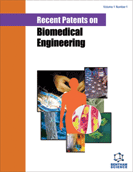Abstract
In Magnetic Resonance Imaging (MRI), magnetic field spatial variations are used to codify the signal. The presence of static magnetic field in-homogeneities introduces distortions and artifacts in the images. To reduce these effects, magnets with very high magnetic field homogeneity in the Field of View (FOV), particular acquisition sequences and image reconstruction techniques have been proposed. Typical homogeneity requirements are of the order of, at most, a few parts per million. The magnet construction cost grows exponentially with the required magnetic field precision. Besides field in-homogeneities resulting from magnet design and/or construction, there exist two sources of field inhomogeneities which are unavoidable being produced inside the explored sample itself, chemical shift and magnetic susceptibility. In recent years, methods have been proposed to reduce the in-homogeneity effects from reconstructed MRI images: some are based on spatial magnetic field mapping inside the region of interest; some use RF or field gradient pulses to compensate for the loss of phase coherence; others use non conventional coding/decoding processes. Aims of the present paper are to review recent patents on the sequence-based proposed solutions and to discuss their efficacy. Moreover, the paper discusses current and future developments in the field.
Keywords: MRI Magnetic field in-homogeneity, MRI acquisition sequences, modulated field gradients, magnetic field mapping, acceleration coding, MRI image reconstruction techniques, MRI artifacts
 9
9

